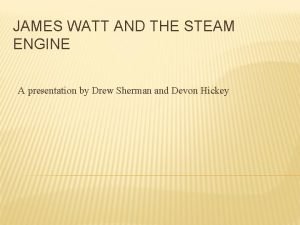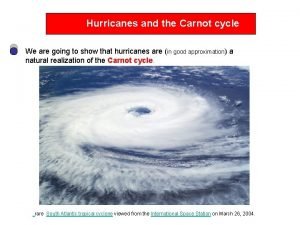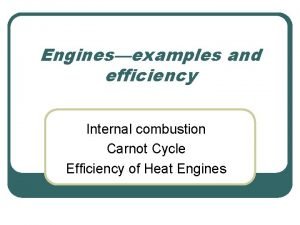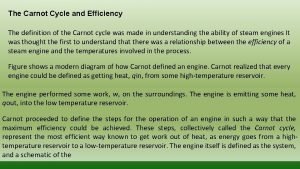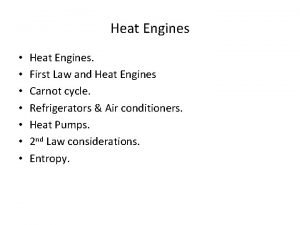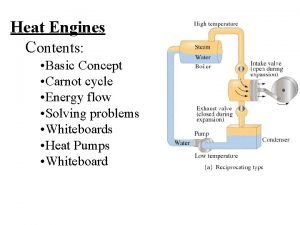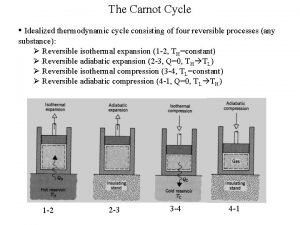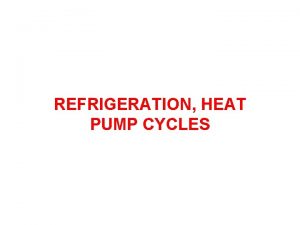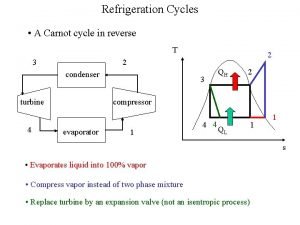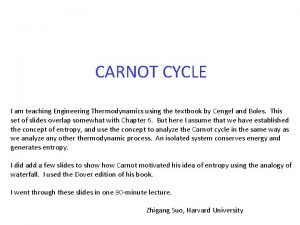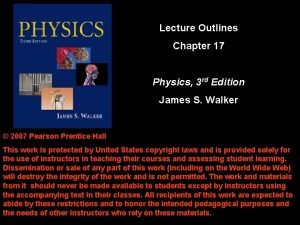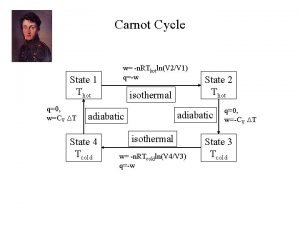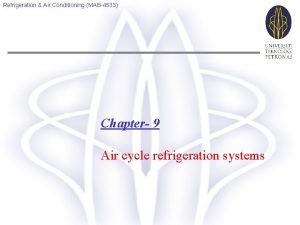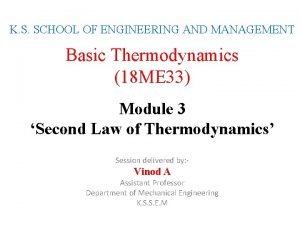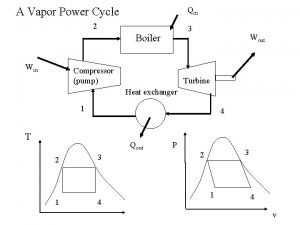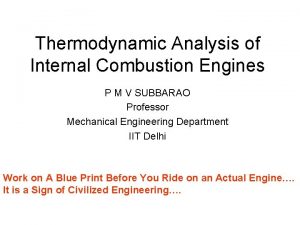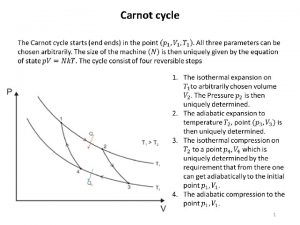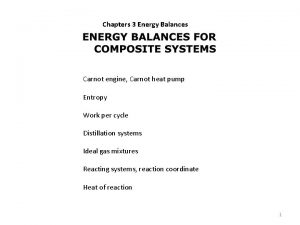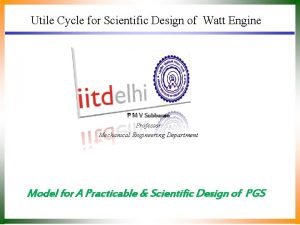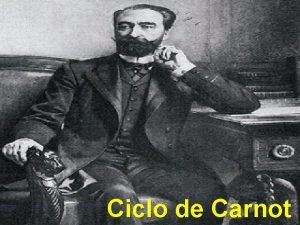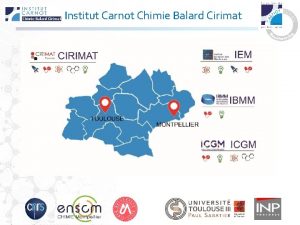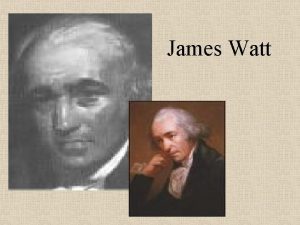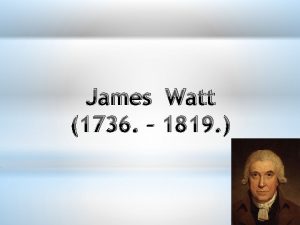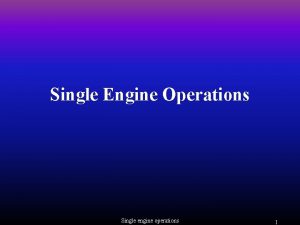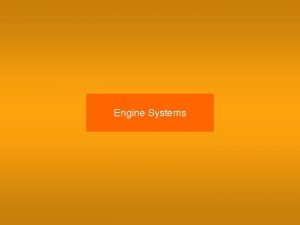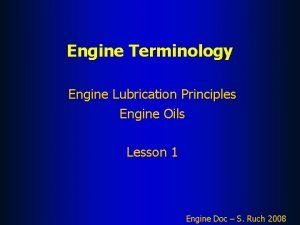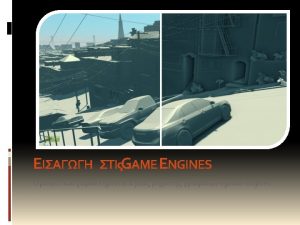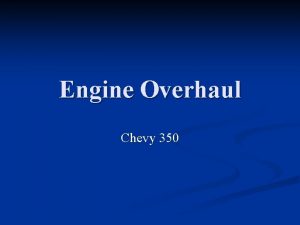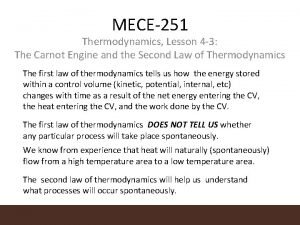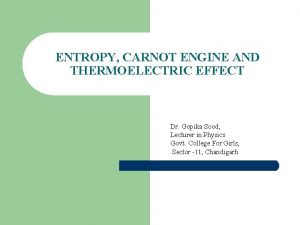Carnot Cycle for Scientific Design of Watt Engine























- Slides: 23

Carnot Cycle for Scientific Design of Watt Engine P M V Subbarao Professor Mechanical Engineering Department Model for A Scientific Design of PGS

Carnot’s Model for Power Generation System Expansion work

Carnot’s Identification of Thermodynamic Cycle for Watts Engine Ability to perform Burn Coal (to add Heat slowly) The Work (Move piston slowly) Wastage or Ecological Nuisance

Carnot’s Model for Power Cycle s 1 – 2 : Compressor : Isentropic Compression : s 2 = s 1 2 – 3 : Boiler: Isothermal Heating : T 3 = T 2 3 – 4 : Turbines : Isentropic Expansion : s 4 = s 3 4 – 1 : Condenser: Isothermal Cooling : T 1 = T 4

Air Standard Carnot Cycle 2 3 1 4 Practice on your own……

First Law for A Control Volume • Conservation of mass: • Conservation of momentum: • Conservation of energy:

Compressor : Isentropic Process SSSF: Conservation of mass First Law : No heat transfer during compression.

2 – 3 : (Fire Tube) Boiler for Isothermal Steam Generation QCV 2 No work transfer in boiler 3

Identification of Carnot’s High Temperature for Isothermal Steam Generation, T 3 = T 2 = Thigh For reversible constant Pressure & Temperature Process

Expansion : Adiabatic Process : No wastage 3 T 4 Avoid heat transfer during expansion. Ideally zero….

4 – 1 : Condenser : Isothermal Cooling : T 1 = T 4 QCV 1 No work transfer in condenser 4

Analysis of Cycle • First law for a cycle: For reversible adiabatic expansion and pumping: Rate of Heat addition

Cost to Benefit Ratio Analysis of James Watt Engine using Carnot’s Model for Cycle Work done per unit volume of the engine: Mean Effective Pressure

Engineering of Carnot Cycle Iso the rm s

Use of Carnot Model for Optimization of Power Plant Minimize the capital & running costs. Compact and efficient.

Selection of A Perspective for Description of Scientific PGS René Descartes Academic, Philosopher, Mathematician, Scientist (1596– 1650) • Discourse on; • The Method of Rightly Conducting the Reason and Seeking Truth in the Sciences. • Published in 1637.

Geometrical Route to Define A Naturally Feasible Cycle for A PGS y x

Lame’s Curve n=0. 5 0 < n < 0. 5

Natural Power Generation Cycle p V

Natural Power Generation Cycle Tmax T Tmin S Smax

Natural Power Generation Cycle Tmax T Tmin S Smax

Computation of Cyclic Energy Interactions • Net work out put : • Heat Input :

Cost to Benefit Analysis of Natural Cycle Efficiency
 James watt presentation
James watt presentation Hurricane carnot engine
Hurricane carnot engine Carnot cycle efficiency
Carnot cycle efficiency Carnot cycle definition
Carnot cycle definition Animatedengines.com otto
Animatedengines.com otto Carnot engine
Carnot engine Carnot
Carnot Carnot efficiency
Carnot efficiency Reverse carnot cycle
Reverse carnot cycle Cycle carnot
Cycle carnot Carnot cycle
Carnot cycle Carnot cycle efficiency depends upon
Carnot cycle efficiency depends upon Carnot cycle
Carnot cycle Basic refrigeration and air conditioning
Basic refrigeration and air conditioning Reverse carnot cycle
Reverse carnot cycle Carnot vapor power cycle
Carnot vapor power cycle External and internal combustion engine
External and internal combustion engine Scientific inquiry vs scientific method
Scientific inquiry vs scientific method How is a scientific law different from a scientific theory?
How is a scientific law different from a scientific theory? First law analysis of an internal combustion engine
First law analysis of an internal combustion engine Stirling engine phone charger
Stirling engine phone charger Watt definition
Watt definition Shakers inventions
Shakers inventions Ley de ohm y watt
Ley de ohm y watt
